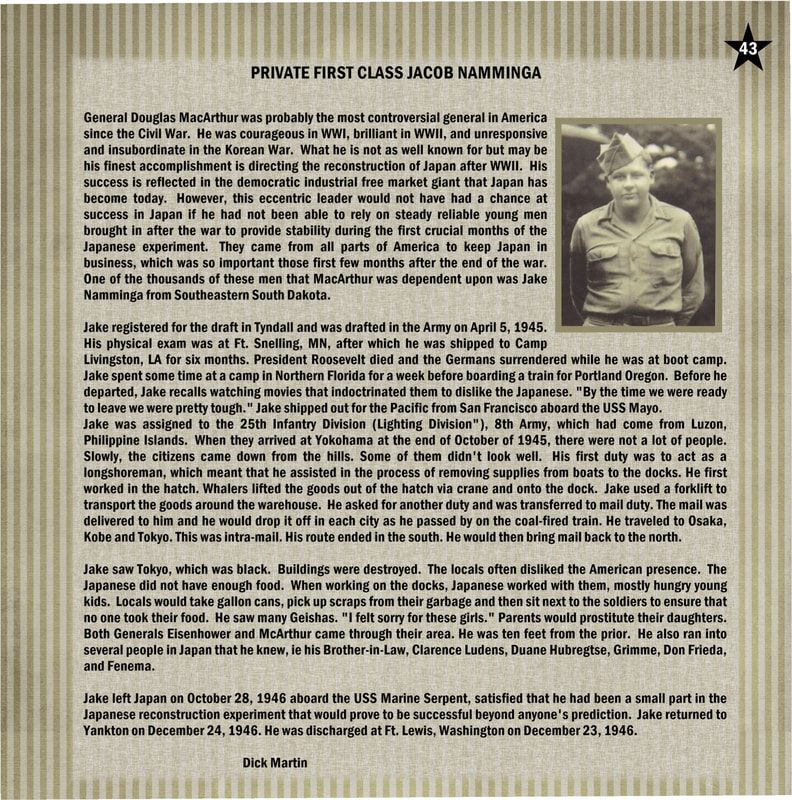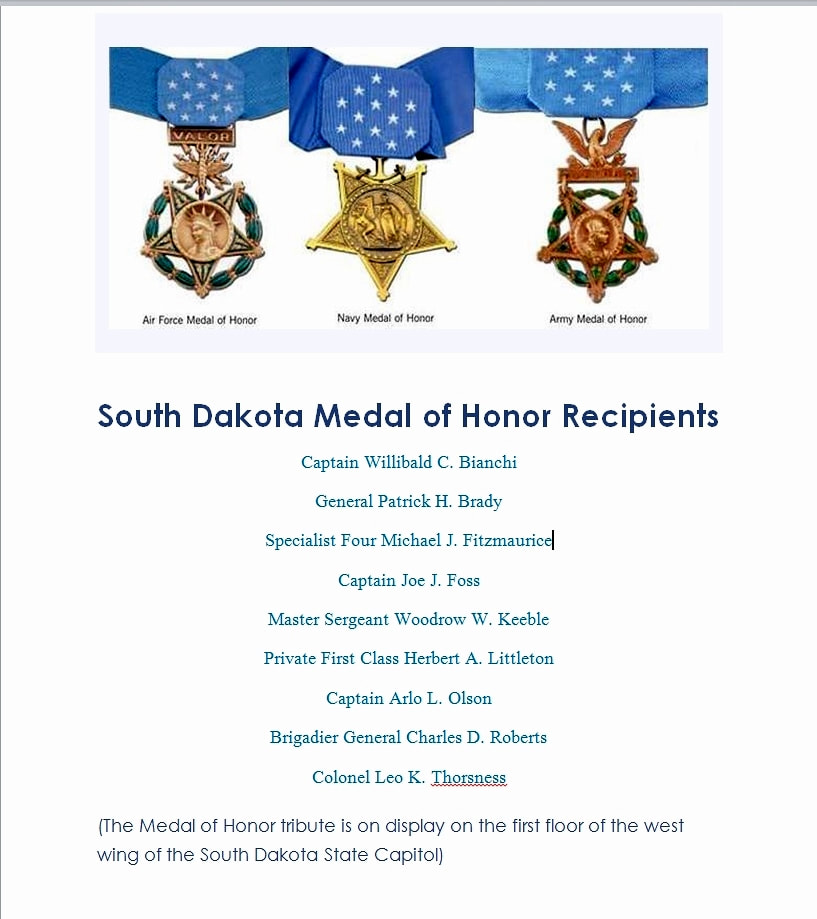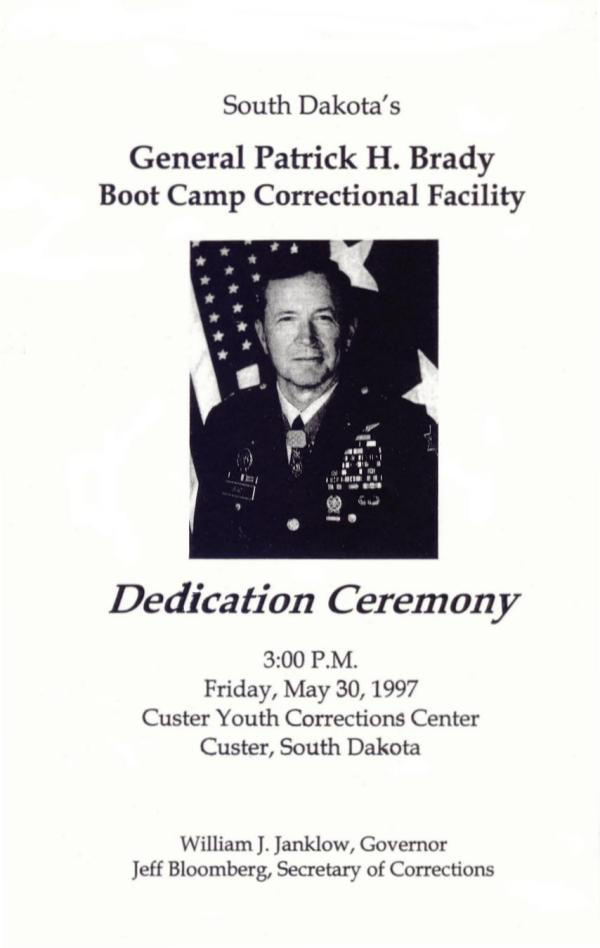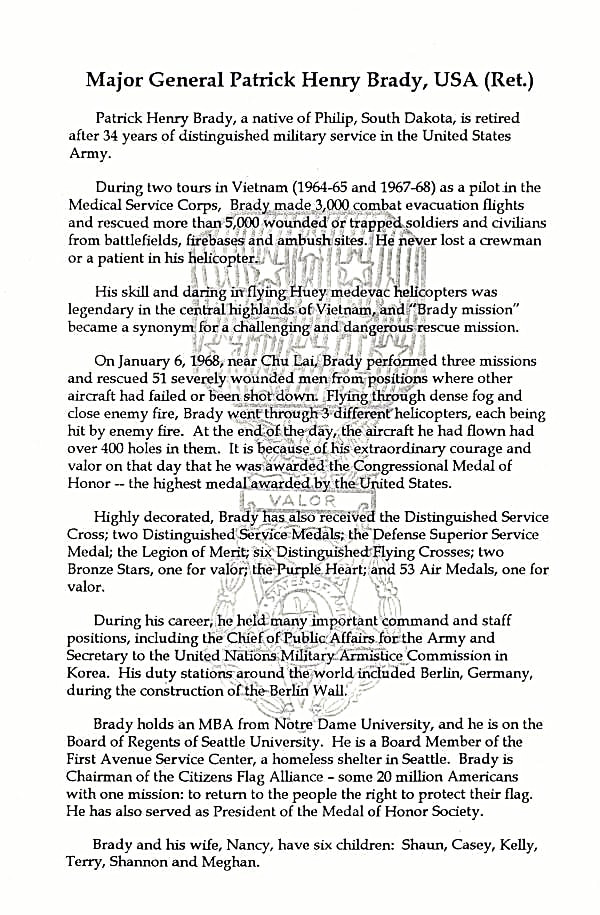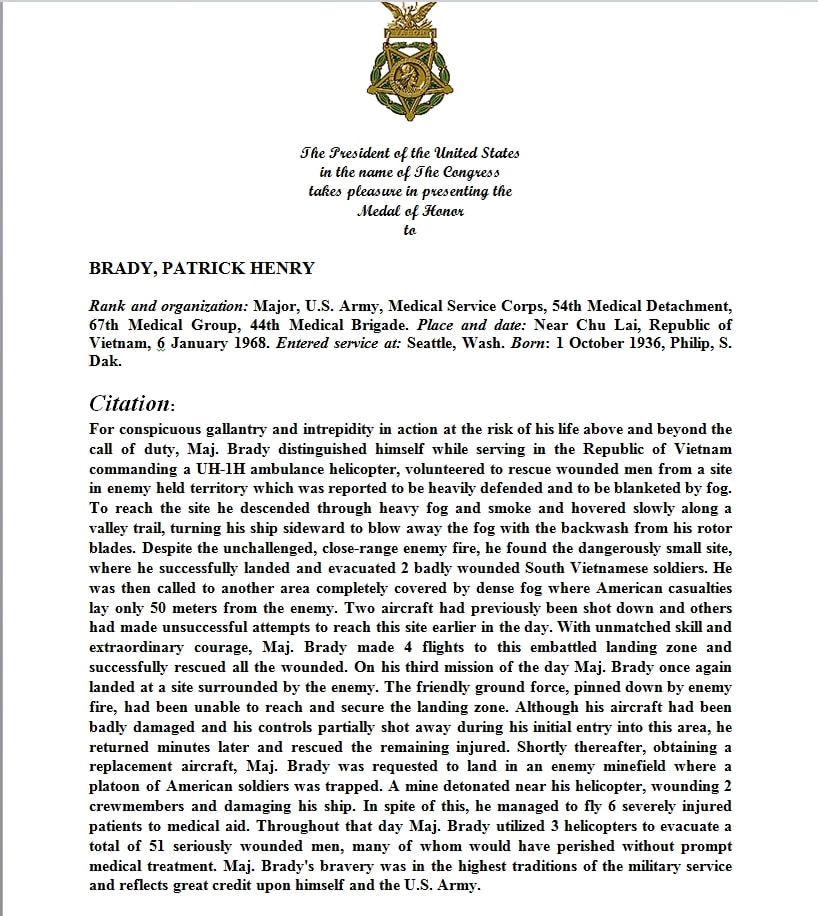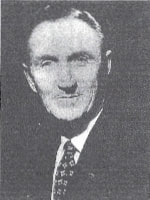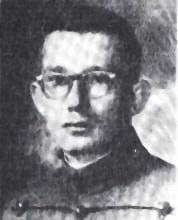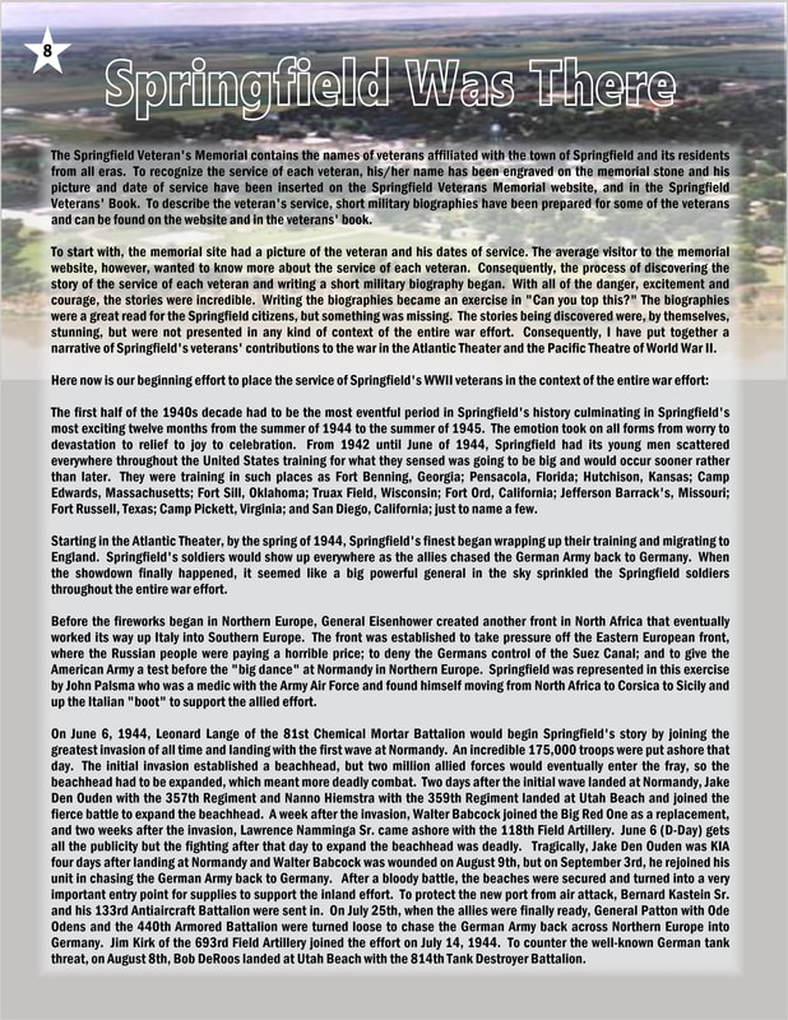|
Submitted by Jim Hornstra from the South Dakota Archives 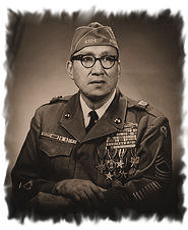 MASTER SERGEANT WOODROW WILSON KEEBLE Woodrow Wilson Keeble was born in Waubay, South Dakota, to Isaac and Nancy (Shaker) Keeble on May 16, 1917. While still very young, he moved to Wahpeton, North Dakota, where his mother worked at the Wahpeton Indian School (now called Circle of Nations School). Woodrow excelled in athletics, especially baseball, and pitched the Wahpeton amateur team to ten straight victories. He was being recruited by the Chicago White Sox when his Army National Guard unit was called up to serve in World War II. In World War II, Keeble served with I Company of the famed North Dakota 164th Infantry Regiment. After initial training in Louisiana, the regiment deployed to Australia in preparation for operations in the Pacific Theater. Keeble's unit was assigned to the Americal Division (officially the 23th Infantry Division). The 164th landed on Guadalcanal on October 13, 1942, to help the battered First Marine Division clear the South Pacific island of Japanese. Keeble's regiment of Dakotans was the first United States Army unit to conduct an offensive operation against the enemy in any theater. During these battles, Keeble's reputation for bravery and skill grew. Nearly a head taller than most of his fellow soldiers, he was an expert with the Browning Automatic Rifle (BAR). His other great weapon was his pitching arm, which he used to hurl hand grenades with deadly accuracy. James Fenelon, a member of the Standing Rock Sioux Tribe of North and South Dakota who fought with Keeble on Guadalcanal, once remarked that “The safest place to be was right next to Woody.” After the battles on Guadalcanal, Keeble and the rest of the regiment participated in combat campaigns on the islands of Bougainville, Leyte, Cebu, and Mindanao. Following the Japanese surrender, the entire Americal Division landed in Japan and took part in the occupation of the Yokohama region. After the war, Keeble returned to Wahpeton and worked at the Wahpeton Indian School. In 1947, Woodrow Wilson Keeble married Nettie Abigail Owen-Robertson. The 164th Infantry Regiment was reactivated in 1951 during the Korean War; they trained at Camp Rucker, Alabama. When Keeble's commanding officer had to select several sergeants for deployment to the front lines, he decided to have his men draw straws. Keeble volunteered instead. Asked why, Keeble said, “Somebody has to teach these kids how to fight.” Keeble, described as a gentle giant by his friends, was a ferocious warrior in battle, as evidenced by his heroic actions during Operation Nomad-Polar. Official records confirm Keeble was initially wounded on October 15, and then again on October 17, 18, and 20 - for which he received only one Purple Heart. For his bravery on the 18th, he was awarded a Silver Star. His heroism on the 20th made Keeble a legend - and 57 years later resulted in his posthumous Medal of Honor. His bravery in the face of enemy fire was so remarkable that a recommendation that he receive the Medal of Honor was twice submitted. In both cases, the recommendation was lost. When Keeble's men endeavored to submit the recommendation a third time, officials informed them they were too late; the 24th Division had reached its quota of Medal of Honor recipients. After reconsideration, Keeble was awarded the Congressional Medal of Honor by President George W. Bush, and was the first Sioux Indian to receive this award. Woodrow W. Keeble died January 28, 1982, and is buried at Sisseton, South Dakota. The President of the United States of America, authorized by Act of Congress, March 3, 2008, has awarded in the name of Congress the Medal of Honor to MASTER SERGEANT WOODROW W. KEEBLE UNITED STATES ARMY Citation The President of the United States of America, in the name of Congress, takes pride in presenting the Medal of Honor to Master Sergeant Woodrow W. Keeble, United States Army, for conspicuous gallantry and intrepidity, at the risk of his life, above and beyond the call of duty: In action with an armed enemy near Sangsan-ni, Korea, on 20 October, 1951. On that day, Master Sergeant Keeble was an acting platoon leader for the support platoon in Company G, 19th Infantry, in the attack on Hill 765, a steep and rugged position that was well defended by the enemy. Leading the support platoon, Master Sergeant Keeble saw that the attacking elements had become pinned down on the slope by heavy enemy fire from three well-fortified and strategically placed enemy positions. With complete disregard for his personal safety, Master Sergeant Keeble dashed forward and joined the pinned-down platoon. Then, hugging the ground, Master Sergeant Keeble crawled forward alone until he was in close proximity to one of the hostile machine-gun emplacements. Ignoring the heavy fire that the crew trained on him, Master Sergeant Keeble activated a grenade and threw it with great accuracy, successfully destroying the position. Continuing his one-man assault, he moved to the second enemy position and destroyed it with another grenade. Despite the fact that the enemy troops were now directing their firepower against him and unleashing a shower of grenades in a frantic attempt to stop his advance, he moved forward against the third hostile emplacement, and skillfully neutralized the remaining enemy position. As his comrades moved forward to join him, Master Sergeant Keeble continued to direct accurate fire against nearby trenches, inflicting heavy casualties on the enemy. Inspired by his courage, Company G successfully moved forward and seized its important objective. The extraordinary courage, selfless service, and devotion to duty displayed that day by Master Sergeant Keeble was an inspiration to all around him and reflected great credit upon himself, his unit, and the United States Army.
0 Comments
Submitted by Dick Martin Fragging – “to kill, wound or assault (especially an unpopular or overzealous superior) with a fragmentation grenade.”
I was in company A3 in the Class of 1970 at West Point. In my company A3, the class that graduated one year before my class, the Class of 1969, was a cadet by the name of Tom Dellwo who was from a small town in Montana. He was a star man, which meant he was ranked at the top of his class and got to wear a gold star on his collar to display his lofty status. It was quite an accomplishment, considering he was competing against all the prep-schoolers from the East. He was totally unaffected by his lofty status, taught Sunday school, and could not have been a finer example of what West Point wanted its cadets to be. I did not know anyone who did not think the highest of Tom. I certainly looked up to him.
The class of 1969 was the last class at West Point to be impacted by the Vietnam War. After Tom graduated, he was shipped out to Bien Hoa Army Base in Vietnam. My class, 1970, spent our summers training for Vietnam and expected that is where we would be headed; but by the time we had graduated, the war had wound down enough to the point that the only members of my class to go to Vietnam were cadets anticipating a military career and wanting to “punch their ticket,” by volunteering for a tour in Vietnam. In the early hours of March 15, 1971, a disgruntled enlisted man, Private Billy Dean Smith mistakenly thinking his commanding officer was billeting where Lt Dellwo and two other officers were sleeping, lobbed a fragmentation grenade into their sleeping quarters, killing Lt Dellwo, a fellow Lieutenant, and wounding a third. Smith’s commanding officer was believed to be the target; but not knowing the sleeping arrangements of the officers, Smith mistakenly targeted the wrong officers. Earlier in the day, Smith had been heard to threaten his CO for beginning “less than honorable” discharge procedures against him. In addition, Private Smith had the used fragmentation grenade pin in his possession. It should have been an “open and shut case.” Instead, Smith became a “cause celebre” of the Left and got his trial changed to Los Angeles, Smith’s home town, and a place where OJ Simpson had found juries very friendly to Black defendants. I heard this story years ago and hoped his classmates would have taken care of it by now. I recently read George Lepre’s book, “Fragging,” and have learned, not unexpectedly, Smith has been in jail at least twice since then for “assault with a deadly weapon?” I have not been able to determine his whereabouts now or even if he is alive. My unsuccessful searches seem to suggest that Private Billy Dean Smith is no longer alive. I also learned from Lepre’s book that in describing the events leading up to the trial and expressing opinions about what was going on during the trial, the Left leaning periodicals and individuals, as usual, covered themselves with shame with the gutter language they used. It is hard to see the advantage of using such language among civilized people, but it is hard to understand anything the Left does. Whether you like it or not, we will all have to live with the knowledge that a person who offered nothing positive to the world now or in the future indiscriminately took the life of an individual; who, by all accounts, would have contributed greatly to others and to society. Instead, Lieutenant Dellwo is gone, and we are left with the Left’s “cause celebre,” Billy Dean Smith, whose contribution to society has been negative and who has spent much of his life behind bars. Thank you, Angela Davis, Bert Lancaster and the rest of the amoral Leftists involved. The Left would like to see this issue as a product of our involvement in Vietnam. That excuse is lame. All wars have dubious beginnings and disgruntled soldiers. This problem stands by itself as an unnecessary violent act by a disgruntled soldier, set free by a system vulnerable to the acts of the Left. |
Categories
All
Archives
October 2023
|
